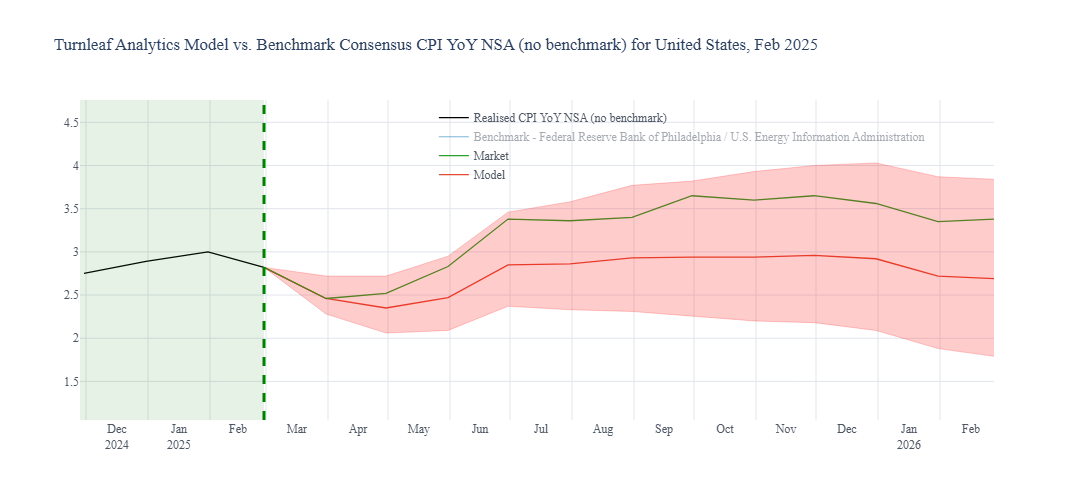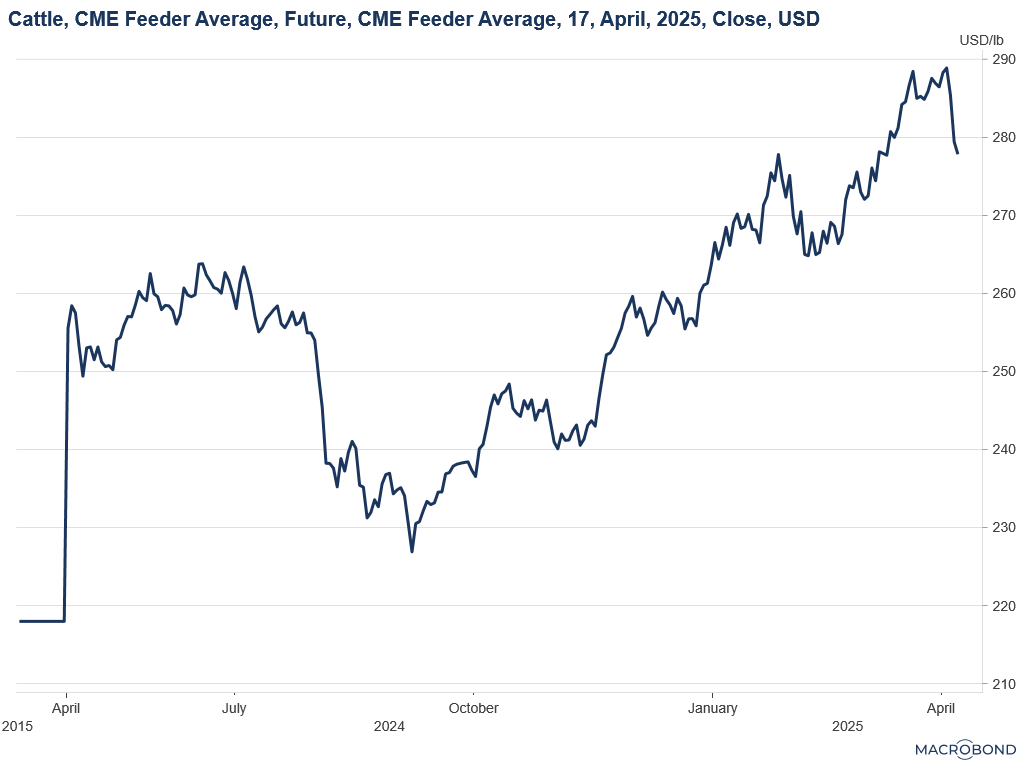The recent imposition of sweeping U.S. tariffs has triggered a sharp stock market selloff, erasing up to $2.5 trillion in market value. More importantly, this sell-off reflects rising expectations of inflation pressure and global recession risk. In response to this elevated uncertainty and price volatility, Turnleaf is now publishing daily U.S. inflation forecasts. These forecasts are driven by a set of key indicators that capture both short-term frictions and long-term structural risks. Since the April 4 announcement, Brent crude prices dropped sharply, historically a signal of recession risk. While this may ease PPI and gas prices in the short term, our model projects that stagflation concerns will emerge later as tariff effects are fully transmitted through supply chains. Given energy’s heavy CPI weighting, the disinflationary impact is likely to be short-lived.
Since the April 4 announcement, Brent crude prices dropped sharply, historically a signal of recession risk. While this may ease PPI and gas prices in the short term, our model projects that stagflation concerns will emerge later as tariff effects are fully transmitted through supply chains. Given energy’s heavy CPI weighting, the disinflationary impact is likely to be short-lived.
In our model, feeder cattle spot prices act as a high-frequency gauge of trade-driven inflation dynamics. As a globally integrated commodity, feeder cattle offers a forward-looking view into cost pressures across the beef supply chain. Following the April 4 tariff announcement, feeder cattle price growth decelerated from +17.3% to +16.6% YoY in a single day, and futures prices declined shortly after (Figure 1). This shift reflects expectations that tariffs on corn and soybean imports will raise feed costs for domestic producers, while export demand will weaken under uncertainty. Although domestic beef may gain a competitive edge in the short term due to retaliation, elevated feeder costs are likely to keep overall price pressures high.
Figure 1

These signals now serve as important drivers of Turnleaf’s inflation models, shaping both the front-end and tail-end of our inflation curve. Key indicators include:
- Gold and platinum buying as hedges against inflation
- Feeder cattle spot and futures prices, a unique but often-overlooked indicator that captures real-time shifts in global agricultural trade, feed costs, and protein supply chains
- Crude oil dynamics, reflecting energy costs and recession risk
- The VIX, a proxy for financial market stress
- The Global Uncertainty Index
- Firm and consumer inflation expectations surveys
Together, these indicators reflect a macro landscape where news-driven volatility, tariff risks, and global uncertainty are crucial in shaping inflation outcomes.